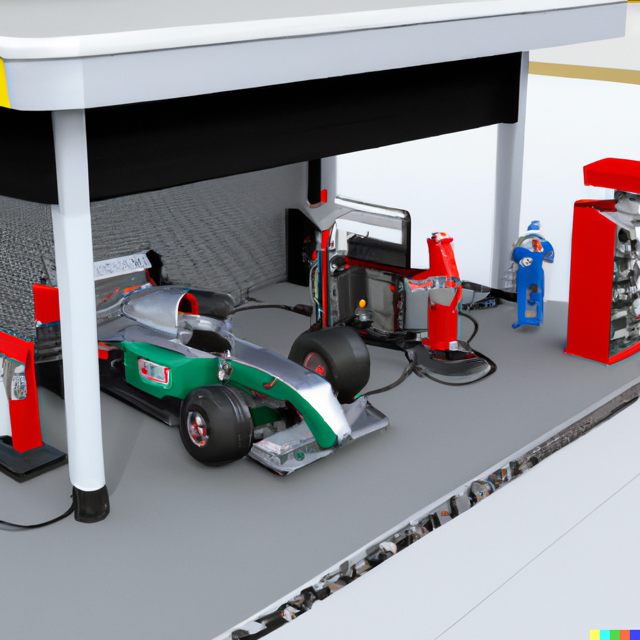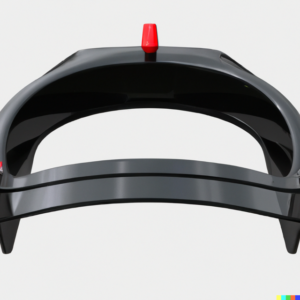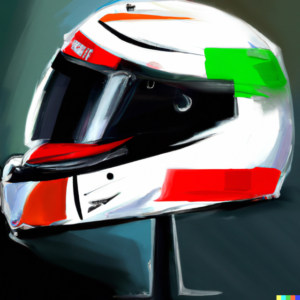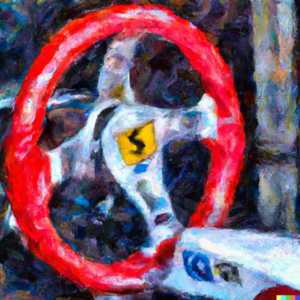How Does a Pit Stop Work in F1

An F1 team’s pit stop strategy is a crucial component of any F1 Grand Prix weekend. It could mean the difference between taking home the victory or losing out.
If you’re new to Formula 1, you’ve probably been amazed at how the modern pit stop can happen in as little as 2.6 seconds. How is this achieved? Who is involved? And what are the rules behind pit stops?
Here are all answers to what happens beyond the pit wall.
Anatomy of an F1 Pit Crew
Usually, F1 pit crews consist of more than 20 people. Every pit crew member is assigned a specific role and together they work to stabilize the Formula 1 car, change the tires, make adjustments and safely release the car.
Tire gunner
There are four tire gunners, one for each wheel of the car. As an F1 car comes to a stop in its pit box, the tire gunners use a pneumatic wrench known as a wheel gun to remove the car’s single-locking wheel nut from each tire and then reinstall it on the new tire.
Tire carrier
There are eight tire carriers, two for each wheel of the car. These crew members are split into two groups: tire on and tire off.
All eight crew members work in tandem with the wheel gunners. Once the wheel nuts have been loosened by the tire gunners, four ‘tire-off’ carriers remove the old tires and the four ‘tire-on’ carriers put the new tires in place.
Front and rear jack
There is one front and rear jack man that both use a special piece of equipment to lift the car into the air from the front and rear of the car in order to change the tires. The rear jack man comes in behind the car after the front has been lifted up.
Stabilizer/Side jack
After the car has been lifted up, two stabilizers stand on each side of the car to steady it. This is because when the front and rear jack lifts the car off the ground, the car becomes destabilized.
Stabilizers also operate as side jacks for when the cars’ front and rear wings need to be adjusted or replaced.
Front wing adjuster
There are also two crew members tasked with adjusting or replacing the front wing in the event of it being damaged.
Fire extinguisher
There is also one pit crew member who always has a fire extinguisher on hand.
Pit Stops in Action
In F1, the ideal time to take a pit stop is during a safety car or a virtual safety car. This is because all race cars on track are forced to drive at a slower speed.
The anatomy of a pit stop goes as follows:
Step 1: Hit the marks
Step one is to hit the marks. The entire crew positions themselves, expecting the car to arrive in the exact position. If the car stops slightly forward from its mark, the crew has to adjust their position or angles – and this costs valuable fractions of a second.
Step 2: Raise the car
Once the driver stops in their pit box, the front and rear jacks work to lift the car manually by levering the jack. The two stabilizers will then move in from the side to hold the car steady while it’s up on the jacks.
Step 3: Loosen the wheel
The four tire gunners on each side of the car are already loosening the wheel nuts with their wheel guns during the time the car is being raised. This is so that the moment the car is off the ground, the tire carriers can get to work as quickly as possible.
On each of the four tires, one wheel gunner removes the nut, a second mechanic takes the tire off, a third mechanic puts a new tire on and the wheel gunner moves in again to tighten the wheel nut – all in the space of just a few seconds.
Step 4: Drop the car
As soon as all the new tires are fitted correctly to the car, the jack operates will lower – or drop – the car. Both the jacks have quick-release handles that the mechanics will pull to drop the lifting pads under the car.
Step 5: Signal the car to go
Then comes the final stage of a pit stop; the green light for go. Each pit box has a traffic light system that indicates to the driver when it’s safe to leave the pit stop.
F1 Pit Stop Rules
Pit lane speed limit
The pit lane has a strict speed limit of 60 kph or 80 kph (around 50 mph), depending on the track.
The FIA can enforce penalties or fines for violating the speed limit. To avoid this situation, drivers have a pit lane speed limiter button. When pressed, the pit lane limiter will keep them within the speed limit until they’ve completed their pit stop and reached the pit lane exit.
No reversing
Another rule – and one you might find pretty odd – is that cars are strictly prohibited from reversing in the pit lane. Rather cars are reversed with the assistance of pit crew members.
This rule is implemented because drivers have limited visibility behind them.
Unsafe release
An unsafe release refers to a driver pulling out of their pit box directly into the path of (or potentially colliding into) another passing car.
If a driver is found to have left their pit box in an unsafe manner, they can be assessed for an unsafe release penalty and can face a 10-second stop-and-go penalty.
1 Mandatory pit stop
Under the current FIA Sporting Regulation, it is mandatory for every driver to make at least one pit stop during the race.
Final Thoughts
F1 pit stops are undoubtedly one of the most exciting features of a Grand Prix. They’re the point in the race where everyone holds their breath.
Over 20 crew members work together to effectively execute their pit strategy, changing the front and rear tires and/or making any mechanical adjustments before releasing the driver to continue with the race. And that was all in just 3 seconds!





